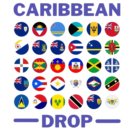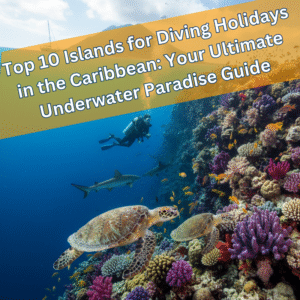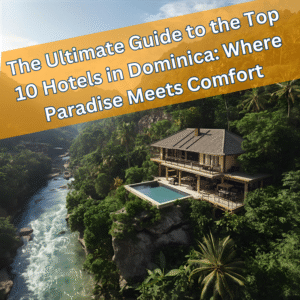DOMINICA

Motto
“After God is the earth”
Capital
Size
Highest Point
National Dish
Population
Language
Overview
Dominica is sometimes referred to as the “Nature Island” of the Caribbean and it’s not hard to see why. The lush rainforests, dramatic landscapes, and unspoiled natural beauty will remind you how amazing the natural world can be.! This hidden gem, located between Guadeloupe and Martinique, is a paradise for nature lovers and adventure seekers alike.
The island was originally inhabited by the Kalinago people, also known as Caribs, who called it “Waitukubuli,” meaning “Tall is her body.” Christopher Columbus encountered the island on a Sunday in 1493, hence the name “Dominica,” from the Latin word for Sunday.
Unlike many other Caribbean islands, Dominica resisted colonization for many years due to its rugged terrain and the fierce resistance of the Kalinago people. The French and British both made attempts to settle the island, leading to numerous conflicts. In 1763, Dominica officially became a British colony, but it wasn’t until 1978 that the island gained its independence.
Today, Dominica is celebrated for its untouched natural beauty and commitment to conservation. The island is a haven for eco-tourism, with attractions that highlight its diverse landscapes. The Morne Trois Pitons National Park, a UNESCO World Heritage site, is one of Dominica’s top attractions. It features stunning natural wonders like the Boiling Lake, the world’s second-largest hot spring, and the Valley of Desolation, a geothermally active area with steaming vents and bubbling mud pools.
Dominica is also home to numerous waterfalls, with Trafalgar Falls and Emerald Pool being among the most popular. These beautiful sites offer opportunities for hiking, swimming, and soaking in the island’s natural hot springs.
For those interested in marine life, Dominica’s waters are rich with opportunities for snorkeling, diving, and whale watching. The island is known as the “Whale Watching Capital of the Caribbean,” with sperm whales being frequently spotted off its coast.
The capital city, Roseau, offers a charming mix of colorful Creole architecture, local markets, and historical sites. Nearby, you can visit the historic Fort Shirley in the Cabrits National Park, which offers insights into the island’s colonial past and stunning views of the surrounding area.
The Kalinago Territory, located on the northeastern coast, provides a unique cultural experience, where visitors can learn about the island’s indigenous people and their traditions.
In addition to its natural wonders, Dominica offers a rich cultural experience. Visit the capital, Roseau, to explore its colorful streets, vibrant markets, and historical sites. Engage with the friendly locals and discover the island’s unique blend of African, Carib, and European influences.



